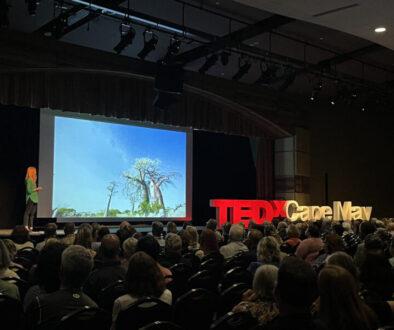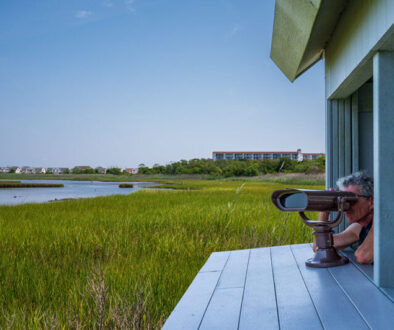The Aesthetic Movement
Underneath the Victorian psyche, understood today as stuffy, uptight, cripplingly moralistic (sometimes hypocritically so), and haughty, one will find a bit of humanity stirring. Their reputation and standing in a community meant everything to Victorians. Yet, underneath, they were human beings, each with longings, failures, talents, loves, beliefs, and secret hopes, just like you or me.
Those stirrings hidden by tightly corseted exteriors were the lifeblood of the Aesthetic Movement. A precursor to the Arts & Crafts Movement, the Cult of Beauty, as the Aesthetic Movement (1860–1900) came to be known, was comprised of artists, designers, writers, and architects who rebelled against the strictures of the uptight Victorian world they’d grappled with and rejected. It’s hard to imagine that prior to this period, art was understood to be art only if it told a story or moral tale. Art for the sake of art, something society can easily accept today, was a completely new and distasteful idea for some.

“During the mid-19th century, the provocative and sensuous Aesthetic movement threatened to dismantle Britain’s fussy, overbearing, and conservative Victorian traditions. More than a fine art movement, Aestheticism penetrated all areas of life – from music and literature to interior design and fashion. At its heart was the desire to create “art for art’s sake” and to exalt taste, the pursuit of beauty, and self-expression over moral expectations and restrictive conformity. The freedom of creative expression and sensuality that Aestheticism promoted exhilarated its adherents, but it also made them the object of ridicule among conservative Victorians. Nonetheless, by rejecting art’s traditionally didactic obligations and focusing on self-expression, the Aesthetic movement helped set the stage for global, 20th-century modern art.” – Aesthetic Art, TheArtStory.org
Begun in Great Britain, the Aesthetic Movement extended to the United States and globally. One can see the influences of the movement in Cape May’s own Victorian House Museum, the 1879 Emlen Physick Estate.
“The Aesthetic Movement, popular in the late 19th century, embraced beauty for its own sake and often drew inspiration from the natural world,” said Cape May MAC Curator Ben Ridings. “At the Emlen Physick Estate, this is evident in the detailed furniture and decorative elements that feature motifs inspired by nature, including flowers, leaves, birds, and more. Dr. Physick enjoyed sports and boating, while his mother, Frances Ralston, had a passion for gardens and floral design. Their interests are reflected in the home’s artistic touches, where nature and leisure come together in the spirit of Victorian refinement.”
One of the movement’s most famous painters is American artist James McNeill Whistler. The painting known as Whistler’s Mother is titled Arrangement in Grey and Black No. 1. The title reflects the artist’s aesthetic approach—concerned not for the subject or story of the painting, but for its color and form. The painting of Anna McNeill Whistler, completed in 1871, is considered an iconic American artwork. But those unfamiliar with Whistler as an Aesthetic painter might be surprised to learn his mother was not the intended model, but rather a last-minute substitute. This was not a planned portrait of a beloved maternal figure, but an artistic arrangement of color and shape in a subdued, tonal palette.


The champion of Aestheticism in literature was Oscar Wilde, who was lampooned for his aesthetic ideals:
“The magazine Punch was filled with cartoons depicting languishing young men and swooning maidens wearing aesthetic clothing. One of the most famous of these, ‘The Six-Mark Tea-Pot’ by George Du Maurier published in 1880, was supposedly based on a comment made by Wilde. In it, a young couple dressed in the height of aesthetic fashion and standing in an interior filled with items popularized by the Aesthetes — an Asian screen, peacock feathers, and blue and white porcelain — comically vow to “live up” to their latest acquisition.” – The Aesthetic Movement, Smarthistory.org
“What I find interesting about the Victorian obsession with beauty is how much they favored completely opposite things,” said Cape May MAC’s Elan Zingman-Leith. “One side wanted roses and ruffles, pink and lilac, curlicues and French frou-frou. The other side wanted straight lines and muddy colors, monk-like simplicity and Medieval religion. Yet they were both fixated on bringing beauty into everyday life.”
The 2025 Emlen Physick Estate guided tour, The Art of Home, explores the rich artistry of Victorian life. Designed by architect Frank Furness, the home showcases Stick Style architecture with intricate moldings, custom furniture, and vibrant wallpaper. Beyond décor, the era’s artistic traditions shine through unexpected details like mourning jewelry made from hair and whimsical “rogue taxidermy” in parlor shades. Even functional elements, from pocket shutters to ceiling medallions, were crafted with elegance. Each room tells a story of beauty, memory, and creativity, making the Physick Estate a living masterpiece of 19th-century design and expression.



